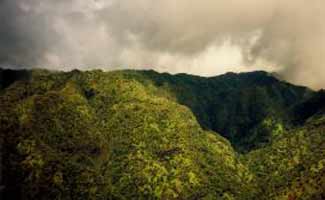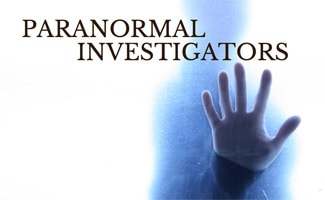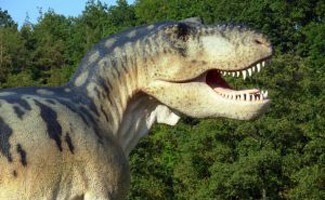Jurassic Period Facts: Rise of the Dinosaurs
 The Mesozoic era saw some incredibly amazing life forms that continue to puzzle paleontologists today. The Mesozoic era was divided in to three individual periods: the Triassic period, the Jurassic period and the Cretaceous period. Smack in the middle of the Mesozoic area, the Jurassic period itself was also divided in to three sections, the early, middle and late Jurassic periods. The Jurassic period brought some amazing changes that bred some amazing prehistoric beasts in a time which fell between 146 and 200 million years ago.
The Mesozoic era saw some incredibly amazing life forms that continue to puzzle paleontologists today. The Mesozoic era was divided in to three individual periods: the Triassic period, the Jurassic period and the Cretaceous period. Smack in the middle of the Mesozoic area, the Jurassic period itself was also divided in to three sections, the early, middle and late Jurassic periods. The Jurassic period brought some amazing changes that bred some amazing prehistoric beasts in a time which fell between 146 and 200 million years ago.
The Early Jurassic Period: the Liassic Epoch (176 to 200 Million Years Ago)
The early Jurassic period, known also as the Liassic epoch came about 176 to 200 million years ago and was divided in to the Hettangian age, the Sinemurian age, the Pliensbachian age, and the Toarcian age. The beginning of the Jurassic period saw a rise of the dinosaurs after the Triassic period saw the extinction of many of the animals that thrived during that time.
The early Jurassic period also brought a much warmer and wetter rainforest type of climate and as such it encouraged reptile expansion. The early Jurassic period saw a variety of other life as well including the Ammonites, marine reptiles and terrestrial animals. While the Triassic period saw the end of many creatures due to extinction it only saw the near extinction of Ammonoids. As the continents shifted during the early Jurassic period the initial continent break up was in motion and this wasn’t the only activity in the world’s oceans. Ammonoid life began to evolve. It did so so quickly that Ammonites alone can be used as markers of fossil zones.
Marine reptiles also saw the early Jurassic period as a prime time to evolve and Ichthyosaurs and Plesiosaurs continued to grow giving birth to new marine reptiles such as the Ichthyosaurus, Temnodontosaurus, Eurycleidus, Macroplata and Rhomaleosaurus. Terrestrial animals which made their appearance during the early Jurassic period include the Heterodontosaurids, Scelidosaurs, Tetanurae, Stegosaurs. Also showing their faces at this time were the smaller carnivores: Sphenosuchid and Protosuchid crocodilians, the new flying Pterosaur species and early mammals such as the Tritylodonts, Sphenodonts, and Lissamphibians.
The Middle Jurassic Period: The Dogger Epoch (176 to 161 Million Years Ago)
The Separation of Pangea and the Rise of the Atlantic
The middle Jurassic period, known as the Dogger epoch came about 176 to 161 million years ago and was divided in to the Aalenian age, the Bajocian age, the Bathonian age, and the Callovian age. The middle of the Jurassic period saw the beginning of the separation of Pangea in to Laurasia and Gondwana and the formation of the Atlantic Ocean.
The middle Jurassic period saw both growth and reduction in life; however, it was certainly not as dramatic of a change as that during the beginning of the Jurassic period. The reason for such explosive growth at the beginning of the Jurassic period was the extinction of so many species during the Triassic period. Marine life during the Dogger epoch saw some thinning of marine life as Icthyosaurs diversity reduced; however this reduced diversity was met with increased numbers of existing species. Also during this period Pliosaurs grew to mammoth proportions, matching killer whales in mass. It is during this time also that Plesiosaurs made their appearance even more known by multiplying in numbers and the Metriorhynchid crocodilians also stepped on to the scene. The Dogger epoch also saw the appearance of new terrestrial life including Cetiosaurs, Hypsilophodonts, Megalosaurs, and Brachiosaurs. As Cynodonts continued to grow during this time the Trithelodont Cynodonts saw the end of the line at the end of the epoch. In terms of mammals it is the middle of the Jurassic era that saw the evolution of what we consider “real” mammals.
The end of the Jurassic Period: the Malm Epoch (161 to 146 Million Years Ago)
The True Pinnacle of Dinosaur Life
The end of the Jurassic period, known as the Malm epoch came about 161 to 146 million years ago and was divided in to the Oxfordian age, the Kimmeridgian age and the Tithonian age. The end of the Jurassic period is known to many as the true pinnacle of dinosaur life and it also saw the true break up of Pangea in to Laurasia and Gondwana. The late Jurassic period saw some simply amazing creatures come to form as well as the growth of existing dinosaurs from the middle Jurassic period. One of the most abundant dinosaurs to roam the Earth during the end of the Jurassic period was the Sauropods. The Cetiosaurids of the middle Jurassic period come to be replaced by the Camarasaurs, Brachiosaurs and Diplodocids many of which were absolutely gargantuan in size. Along with the humongous beasts which began roaming the Earth during this time crocodiles, lizards, frogs, turtles, marine reptiles, flying reptiles and the first birds in existence graced the Earth as well.
Jurassic Period Facts: Commonalities Among Dinosaurs
While the Jurassic period is neatly divided by and for paleontologists in to three eras, which are in turn divided in to their own periods, Jurassic facts are not. Jurassic facts, species and artifacts are, in fact, often given the label of Jurassic without having a specific period of the Jurassic age pinned to them. There are many facts that relate to broader concepts and events that occurred during the Jurassic period which do not specifically apply to one section or the other and instead can be applied to the entire stretch of time from the early to the late Jurassic era. Such facts and artifacts cover geography, tectonics, fauna and flora as well as common misconceptions or this time as well.
The Breaking of Pangea into Laurasia and Gondwana
As already mentioned above, during the Jurassic period the massive continent Pangea broke in to Laurasia and Gondwana; however, during the Jurassic period there were many other geographic changes afoot. The breaking of Pangea also brought the Gulf of Mexico in to existence and the North Atlantic Ocean came in to being.
The Rise of North America, the Atlantic, the Gulf of Mexico, and the Rocky and Sierra Nevada Mountains
The Atlantic Ocean of the beginning Jurassic period was a narrow ocean which bore very little resemblance to the Atlantic Ocean we know today. The lower Atlantic did not show itself until Gondwana broke apart during the Cretaceous period. Due to the rainforest like climate of the Jurassic era there was no evidence of either ice caps or glaciers and due to the larger continents still being in existence there was not yet any evidence of land near the poles at this time either. The larger continents at this time were also rotating; however, different sections of the continent rotated at different rates and directions causing rift valleys which went on to cause what is now the North American continent to drift westwards. It is also during this time that the beginnings of the Rocky Mountains and Sierra Nevada mountains saw their beginnings. During the Jurassic period the sea levels also rose and caused flooding over large sections of the continents leaving behind shallow seas and rich sediment across the land.
Plate Tectonics Help Dinosaurs Rule the World
As plates continued to collide over this period not only were mountains created but so too were volcanoes which would, according to today’s paleontologists, assist dinosaurs in ruling the earth by eliminating the competition of other land roaming creatures.
Fauna during the Jurassic period became more abundant for the most part following the extinction that occurred during the Triassic period with the exception of a few species which became less diverse but more numerous. Despite depictions in Steven Spielberg’s film “Jurassic Park” dinosaur life during the Jurassic period was not filled with Tyrannosaurus Rex living alongside Velociraptors and Brachiosaurus. Despite the depictions of the Hollywood inspired dino park the truth of the matter is that many of the dinosaurs depicted in Spielberg’s Jurassic Park were not even in existence during the Jurassic period. Take for example the Tyrannosaurus Rex and the Velociraptor, neither of which were walking the Earth until the Cretaceous period. There were, however, many large as well as vicious dinosaurs which roamed the Earth during the Jurassic period and they fell in to three families, the Sauropods, the Theropods, and the Ornithopods.
The Sauropods
The Sauropods of the Jurassic period were the dinosaurs that were characterized by long necks and long tails. Sauropods are also known by paleontologists as the largest living things to ever walk the Earth, some reaching as large as 190 feet long! Some of the most recognized Sauropods of the Jurassic era include: Diplodocus, Apatosaurus, Brachiosaurus, and the Amygdalodon. The Theropods of the Jurassic period were the dinosaurs that were bipedal and almost all of them were carnivorous. Some of the most recognized Theropods of the Jurassic era include: Ceratosaurus, Megalosaurus, Magnosaurus, and Archaeopteryx. The Ornithopods of the Jurassic period were the dinosaurs who had bird like hips (characterized by a backwards pointing pelvis), were herbivores, had a beak and switched from being quadrupedal to being bipedal. Some of the most recognized Ornithopods of the Jurassic era include the Iguanodon, Agilisaurus and the Phyllodon.
Jurassic Period Plant Life: Age of Cycads
 Flora during the Jurassic period was abundant and conducive to thriving dinosaur populations. As the warmer seas rose to cover continents in shallow seas fertile and moist ground gave way to thick and tall plant life. Cycads were especially abundant during the Jurassic period which is why many paleontologists refer to this time as the “Age of Cycads”.
Flora during the Jurassic period was abundant and conducive to thriving dinosaur populations. As the warmer seas rose to cover continents in shallow seas fertile and moist ground gave way to thick and tall plant life. Cycads were especially abundant during the Jurassic period which is why many paleontologists refer to this time as the “Age of Cycads”.
Cycads are plants which grow from seeds and flourish into plants whose leaves resemble palms. The moist environment of the Jurassic period also provided ideal conditions for thriving jungles which grew to cover large portions of land. Conifers also thrived during the Jurassic era growing large tall trees as well as taking over low latitude vegetation with the Mesozoic era Cheirolepidaceae. Other shrubs and ferns which took over forest life include the Cycads, Ginkgos and Dicksoniaceous tree ferns.
Rich Plant Life Helps Dinosaurs Grow and Expand
It is not only the land which was conducive to flora life though, as the oceans underwent change. So too did ocean life, and algae became more sparse. It is during the Jurassic period that Coralline algae made its first appearance. As a result of such luscious and thick plant life during the Jurassic era dinosaurs were able not only to rule the Earth but they were able to diversify to allow the coming of the Cretaceous period which brought with it many more fierce creatures. It is even thought by some that such rich a dense plant life and vegetation gave rise to the gigantic size of the dinosaurs which were to come during the last age of the dinosaurs – the Cretaceous period.
When and How did the Jurassic Period End?
As the Jurassic period came to a close it ended in a similar way to which it began. The Jurassic period began with a huge mass extinction which eliminated some of the biggest dinosaurs of the Triassic period. While the end of the Jurassic period did not bring such a dramatic change it did, in fact, bring a closing of doors for some major dinosaur species. The extinction, or “dying out” that came to be at the end of the Jurassic period obviously fell short of the mass extinction at the end of the Cretaceous period in magnitude as well; however, it did create some rather huge changes for dinosaur life. Dinosaurs continued to remain dominant over the land during the following Cretaceous period, although the smaller dinosaurs that saw the end of the Jurassic period had no idea of the mammoth dinosaurs that were to be ushered in with their small extinction event.
While it is unknown as to what caused the minor mass extinction that accompanied the end of the Jurassic period it is known that it brought the end to quite a few species of dinosaur. Among the dinosaurs that saw their end ushered in with the end of the Jurassic era were the majority of the giant Sauropods such as Mamenchisaurus, Diplodocus and Brachiosaurus. The transition in to the Cretaceous period also saw the end of the majority of Stegosaurids including the Stegosaurus, Kentrosaurus and Tuojiangosaurus. Additionally many genera of ammonoids, marine reptiles and bivalves saw their end of days as the Jurassic period drew to a close. While unfortunate for these species that did not live through to the beginning of the Cretaceous period their extinction played a role in the evolution of the real kings of dinosaurs who trod the Earth during the age of gigantism – the Cretaceous period.
Lean More
Find out more about Jurassic period at the Smithsonian either in person at the National Museum of Natural History or online at their Department of Paleobiology.





anybody there?
Yes, can we help you?
You have 6 months
The biggest dinosaur (predatory) in the Jurassic is….
Lets start a new discussion about Jurassic predators.
I think dinosaur weren’t extent they just became smaller generation by generation…
um anyone there
Yes, can we help you?
#illuminati Confirmed.
Until now I didn’t really believe the existence of Jurassic. Can you explain to me on how Jurassic fades away in our period/today?
Kenneith, from our research, at this time it’s still unknown what caused the extinction that led to the end of the Jurassic period – one of life’s mysteries! Thanks for exploring our website and stopping by to read our article!
ah thanks for your response hope you find the cause.. 🙂